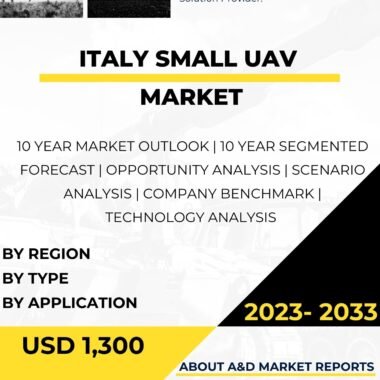Description
Belgium Airborne ISR Market
The Belgium airborne ISR (Intelligence, Surveillance, and Reconnaissance) market is a significant segment within the country’s defense industry. Airborne ISR refers to the use of aircraft and associated systems to gather and analyze information for intelligence purposes, surveillance operations, and reconnaissance missions. Belgium recognizes the importance of having robust airborne ISR capabilities to enhance situational awareness, support military operations, and ensure national security. The primary driver for the Belgium airborne ISR market is the evolving security environment. Belgium, as a member of NATO and the European Union, faces diverse security challenges, including terrorism, border surveillance, and crisis management. Airborne ISR assets play a crucial role in monitoring these threats, gathering intelligence, and providing real-time information to decision-makers.
Airborne ISR platforms encompass a wide range of aircraft, such as fixed-wing aircraft, unmanned aerial vehicles (UAVs), and helicopters. These platforms are equipped with advanced sensors, cameras, radars, and communication systems to collect, process, and disseminate intelligence data. They enable the monitoring of large areas, identification of potential threats, and provision of valuable information to ground forces.
The Belgium airborne ISR market is influenced by the country’s participation in multinational defense initiatives. Collaboration with NATO allies and partner nations allows Belgium to enhance its airborne ISR capabilities through joint exercises, information sharing, and technology transfer. Such collaborations enable Belgium to access advanced ISR technologies and benefit from shared expertise and best practices.
Belgium’s domestic defense industry plays a crucial role in the development and integration of airborne ISR systems. Belgian companies, such as Sabca, Thales Belgium, and FN Herstal, contribute to the research, development, and manufacturing of ISR sensors, communication systems, and mission systems. These domestic capabilities foster innovation, create job opportunities, and contribute to the economic growth of the Belgium airborne ISR market.
Collaborations with international partners and suppliers are also essential for the Belgium airborne ISR market. Belgium often engages in partnerships with defense companies from NATO member states and other allied nations to develop and procure advanced ISR systems. These collaborations allow for technology transfer, cost-sharing opportunities, and the ability to leverage collective expertise in airborne ISR capabilities.
The Belgium airborne ISR market faces challenges such as technological advancements, budget constraints, and the need for interoperability. As the security landscape evolves, ISR systems must adapt to address new threats and incorporate emerging technologies, such as advanced sensors, data analytics, and artificial intelligence. Adequate funding is crucial to ensure the procurement and modernization of airborne ISR platforms and associated systems.
Furthermore, interoperability among different ISR platforms and information sharing between military branches and international partners are essential for effective airborne ISR operations. Standardization, compatibility, and seamless integration of ISR systems enable better coordination, data fusion, and the ability to achieve a comprehensive situational awareness picture.
In conclusion, the Belgium airborne ISR market is a vital segment within the country’s defense industry. The integration of advanced airborne ISR capabilities enhances Belgium’s ability to monitor threats, gather intelligence, and support military operations. Domestic capabilities, collaborations with international partners, and participation in multinational defense initiatives drive the growth and development of the airborne ISR market in Belgium. As the security challenges continue to evolve, the demand for advanced airborne ISR systems and technologies is expected to increase, fostering innovation, collaboration, and economic growth within the sector.




